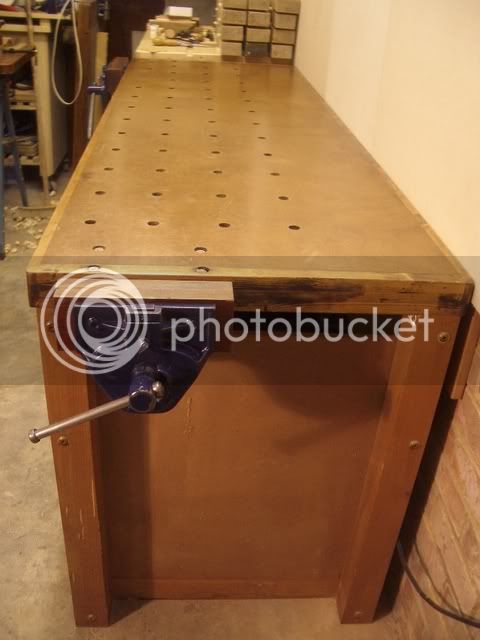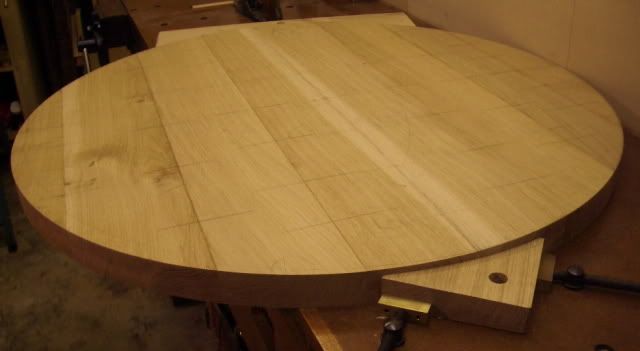.
Benches are very much a personal thing and who better to make a bench than a wood worker? I’m always disappointed by the factory made ones, both in quality and design.
This is a bench I made about 15 years ago from 2” waney edged beech that I re-sawed into 4” strips. I hope that it all makes sense.
It resulted from a study of Frank Klausz’s European style bench in Scot Landis’s Workbench book.
Both sets of vice ironmongery, shoulder and tail, are from Axminster
I won’t go into the full details - take too long, but the front edge has a row of square dog holes, and a pair of dogs with springs set into the side to prevent slippage. The shoulder in the hole is angled to throw off debris and the dog fits flush with the top of the bench.(another idea from the book). The dog holes are orientated at about 5 degrees toward the tail vice and the dogs in the shoulder are angles in the opposite direction, so I can release work with a sharp clout on the dog. I use wooden dogs, because sooner or later I’m going to catch it with a plane.
Here’s the tail vice, containing my take on a bench slave.
And the business end faced with some scrap Walnut bits. The groove at the back allows it to run in a straight line.
This is the running gear for the tail vice – again all home-made with Axminster screws. The bit of steel pipe keeps it in a straight line and the right-angled block runs along the side beam with a spring-loaded door catch (out of sight).
Here’s the bench slave. It fits in the tail vice or screwed onto the end. It can support boards of any width by raising and lowering the support at the top., with the left end of the board held in the shoulder vice.
Here it is in use with a board in it.
In short – the best thing I ever made. If I had to remake it, I would have left the top as loose boards secured with screwed rods instead of gluing the lot as I did with this one.
.










































